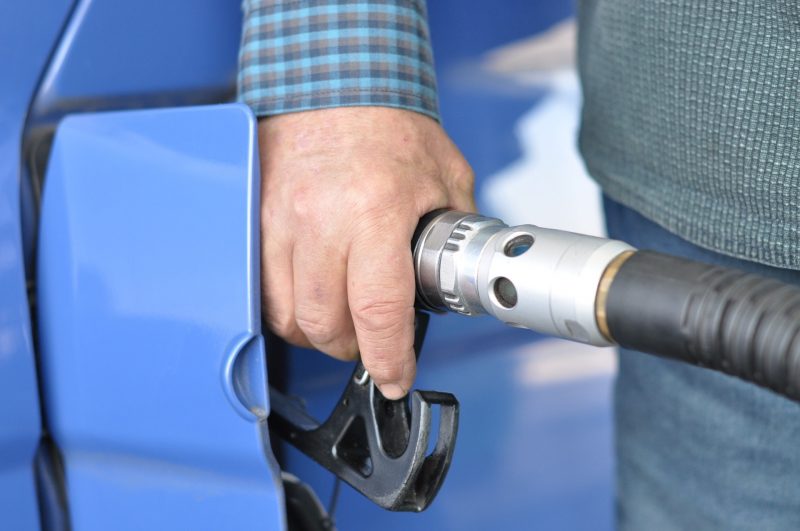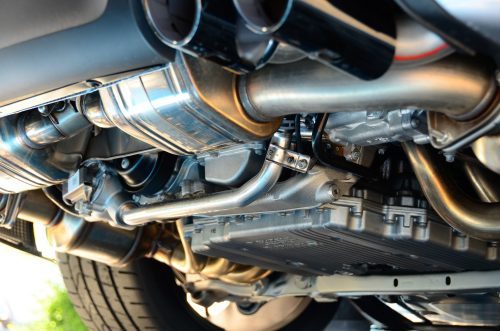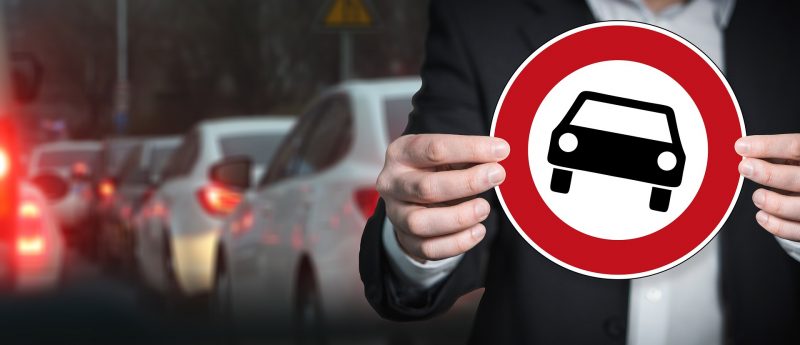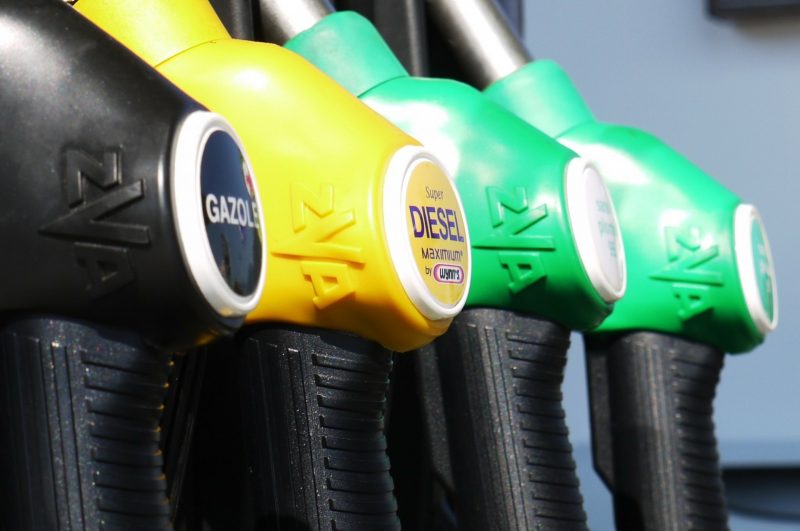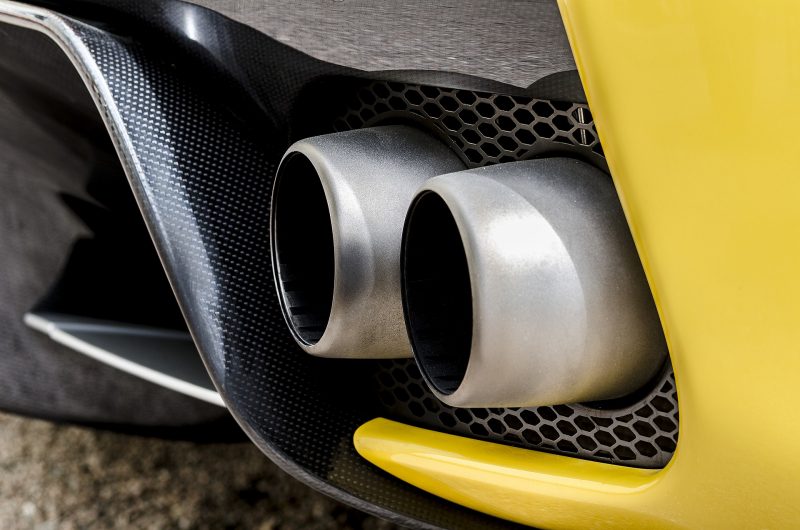Residents in the State of Connecticut must get a vehicle emissions test every other year. To complete the test, drive your car to a state emissions testing facility with your vehicle, bring your test notification (if the Connecticut Department of Motor Vehicles mailed one to the owner’s residence), and be ready to pay the test fee. People moving to Connecticut and seeking residents must complete an emissions test before getting their car registered with the Connecticut Department of Motor Vehicles. Connecticut administers different emissions tests depending on the model year, fuel type, and weight of the vehicle.
Requirements to Pass the Connecticut Smog Check
All vehicles in Connecticut must get a smog check every two years unless it is one these exempted vehicle types:
- Agricultural equipment
- Electric Vehicles (This does not include hybrids)
- Motorcycles ( This includes motorized bicycles and mopeds)
- Diesel school buses (Type II)
- .Vehicles used by auto dealerships (provided the dealer uses the vehicle for auction, wholesale, or transportation purposes and has a Dealer, Repairer, or Transporter license tag)
- Vehicles weighing more than 10,001 lbs
- Vehicles with a composite title (Vehicles assembled with the parts of several different types of parts)
- Vehicles made in the 2014 model year or newer
- Vehicles made in the 1992 model year or older
- Vehicles registered and designated as NOT designed for highway use
Smog Check Fees
Connecticut charges $20 for all smog checks due at the time of the scheduled test. Testing centers accept cash and may also accept checks, and credit and debit cards. Call your local Connecticut testing location to find out. Testing locations are not required to accept checks or credit and debit cards. If the location does not, the location must display a sign stating, “Cash Only”.
If a vehicle owner is 30 days late in getting their car tested from their scheduled testing date, or 60 days late from their scheduled retest, the Connecticut Department of Motor Vehicles charges a late fee of $20. Testing locations do not accept late fees. Residents passed due in getting their vehicle tested will receive a late-fee notice from the Connecticut DMV. One way to avoid a late fee is to make sure your the Connecticut DMV has your current address.
Performing Emissions Testing in Connecticut
The State of Connecticut administers several different emissions tests on vehicles registered in the state. The test your vehicle receives depends on the age, fuel-type, and weight of the vehicle.
OBD (On Board Diagnostic) Test for 1996 and Newer Vehicles in Connecticut
The OBD computer system installed in U.S. manufactured 1996 and newer vehicles is a sort of a mechanical issue early warning system. It constantly monitors a vehicle’s engine and emissions systems and lets technicians know when a mechanical issue in the vehicle needs to be addressed. A technician will hook a diagnostic test computer up to your vehicle’s Diagnostic Link Connector (DLC) using a cable to allow the technician’s computer to communicate with the vehicle’s OBD system computer. The technician can check your vehicle’s engine and emissions systems and see if the OBD system is throwing any maintenance codes that require attention.
Vehicle Emissions Tests for 1996 and Older Vehicles in Connecticut
There are two types of tests the State of Connecticut uses to make sure vehicles pass Connecticut’s vehicle emissions test requirements.
Vehicles made in the 1996 model year or older, and weigh less than 8500 lbs, Connecticut uses the Acceleration Systems Mode test (ASM 25/25). During this test, test personnel drive a vehicle on a set of rollers ,called a Dynamometer, at 25 miles per hour while placing the vehicle under a 25% weight load recommended for the vehicle’s make and model. Test personnel will also place a probe into the vehicle’s tailpipe to measure the exhaust emissions coming from the tailpipe during the test.
Vehicles that made in the 1996 model year or older, and are:
- Certain vehicles with an All-Wheel Drive drive train (pre 1995 model year) and some vehicles designed for the handicapped
- Vehicles with traction control
- Vehicles weighing more than 8500 lbs
They will receive a Pre-Conditioned Two-Speed Idle Test (PC – TSI). In this test, there is no driving simulation. Test personnel measure the vehicle’s emissions while the vehicle remains in Park or Neutral and test personnel rev the vehicle’s engine at two different RPM (Revolutions Per Minute) levels.
Diesel Vehicle Emissions Testing in Connecticut
For diesel vehicles in the State of Connecticut that are:
- Made in the 1996 model year or older
- Made in the 1997 model year or newer and weigh between 8,501 lbs and 10,000 lbs
Require passing an On Board Diagnostic (OBD) Test. Check out this page’s previous section on OBD testing for more details.
Gas Cap Pressure Test in Connecticut
Any gasoline vehicle made in the 1995 model year or earlier receives a Gas Cap Pressure Leak Test. This test checks to make the gas cap on a vehicle properly seals letting the vehicle’s evaporative emissions system to get rid of exhaust emissions correctly. A vehicle with a defective or missing gas cap will fail its emissions test. The test will have to be retaken once the vehicle owner obtains a new gas cap for their vehicle.
Catalytic Converter Function Test in Connecticut
Connecticut test personnel administer a visual inspection to make sure all vehicles have a catalytic converter. A catalytic converter is an emissions control device that all US manufactured vehicles come with. These devices turn polluting vehicle emissions into non-toxic, non-polluting substances. Removing a catalytic converter from a vehicle will cause the vehicle to fail its vehicle emissions test and is a federal offense.
Failed Smog Inspections – Next Steps
If a vehicle does not pass a Connecticut smog check, the owner has 60 calendar days to get the vehicle retested after addressing the initial mechanical issue causing the vehicle to fail its first test. Connecticut vehicle owners get one free emissions retest per test cycle. (NOT per paid test failure) Also, Connecticut emissions test results will pinpoint the reason for a vehicle failing its emissions test but will not diagnose the cause of the failure.
To get the diagnosis for the test failure, owners can take their vehicle to a Connecticut Certified Emissions Repair Facility (CERF). These are repair facilities with technicians who have passed Connecticut emissions repair certification courses. Or, vehicle owners may also take their vehicle to a repair facility of their choice. However, if the vehicle fails a second test, only expenses from a certified repair facility qualifies for a Connecticut Vehicle Emissions Repair Cost Waiver if an owner chooses to apply for one and the cost of repairs meets the waiver’s cost expenditure requirements.
Vehicles registered in Connecticut, typically fail their emissions test for one of several reasons. If a vehicle does not pass a Connecticut OBD Test it may be because:
- The tested vehicle has a broken “Check Engine” Light or a “Check Engine” Light that is on
- The tested vehicle has a broken or malfunctioning OBD system
- The tested vehicle has a damaged or inaccessible Diagnostic Link Connector (DLC)
- The tested vehicle has a missing, tampered with, or malfunctioning catalytic converter
If a vehicle does not pass a Connecticut Acceleration Simulation Mode (ASM) Test, it may be because:
- The tested vehicle’s exhaust emits a high amount of an air pollutant, like: hydrocarbons, carbon monoxide or nitrogen oxides
- The tested vehicle’s gas cap is malfunctioning or missing
- The tested vehicle’s catalytic converter has been tampered with or is not installed
If a vehicle does not pass a Connecticut Pre-Conditioned Two Speed Idle (PC – TSI) Test, it may be because:
- The tested vehicle’s exhaust has excessive amounts of either hydrocarbons or carbon monoxide or both
- The tested vehicle’s gas cap is missing or broken
- The tested vehicle has a tampered or missing catalytic converter
If a vehicle does not pass a Connecticut Loaded Mode Diesel (LMD) or Modified Snap Acceleration (MSA) opacity test it mostly likely is because of excessive particulate matter detected in the opacity test results. Further more, when a vehicle does not pass one or more of these tests during it’s scheduled testing time, the owner will receive from the testing location the following:
- Vehicle Emissions Test failure brochures
- List of Certified Emissions Repair Facilities (CERF)
- Vehicle Inspection Report (VIR)
- Emissions Repair Data Form (ERDF)
The Certified Emissions Repair Technician (CERT) doing the diagnosis and repairs to the vehicle must fill out the Emissions Repair Data Form (ERDF). When a vehicle owner or a non-certified technician completes the repairs, they must acknowledge on the ERDF that a non-certified technician completed the repairs. The ERDF must be presented to the Connecticut test personnel at the emissions test location at the time of the retest. If this is not done, the vehicle can not be retested. As a side note, vehicle owners must hold on to all vehicle repair receipts. This shows proof the owners completed the required repairs and the owner must present them if they decide to apply for an emissions repair cost waiver.
Failing a Connecticut Vehicle Emissions Retest
If a vehicle does not pass a Connecticut vehicle emissions retest, the Connecticut DMV charges the owner a $20 fee for every retest after the first retest.
Connecticut vehicle Emissions Test Waivers
If a vehicle does not pass a retest, there are 3 types of vehicle emissions test waivers the state of Connecticut offers to residents. Residents can apply for one of these waivers so they do not have to meet the Connecticut vehicle emissions test requirements for the current test cycle if they do not pass their retest.
- Economic Hardship waiver
- Cost waiver
- Functional Diagnosis waiver
Connecticut vehicle owners may call the DMV Emissions Division at (860)263-5611 or (860)263-5333, if they believe they meet the requirements for one of the following waivers listed.
The Connecticut Emissions Test Economic Hardship Waiver
In order for a Connecticut resident to meet the criteria for applying for an economic hardship waiver they must provide documentation showing their income is at or below the state and federal poverty line. They must also show they do not have any other available income or assets to pay for the needed repairs to their vehicle. If an owner demonstrates they meet these criteria showing they are unable to pay for the needed repairs, they can apply for and receive an economic hardship waiver so they do not have to meet the test requirements for the current test cycle.
The Connecticut Emissions Test Cost Waiver
If a vehicle owner spends more than the minimum expenditure amount required to meet the expenditure waiver minimum on required emissions repairs for their vehicle and the vehicle is still unable to pass an emissions test, owners may apply for a cost waiver so they do not have to meet the emissions test requirements for the current test cycle. As of January 1, 2017, the minimum expenditure amount required to meet the waiver’s expenditure minimum is $876.04. This amount changes periodically since the State of Connecticut calculates the minimum using the consumer price index (CPI). Applicants must meet these criteria in order to receive the cost waiver:
- Repairs have to be done by Certified Emissions Repair Technician
- The expenditure minimum is for the total cost of emissions-related repairs made to the vehicle minus any repairs covered by the manufacturer’s warranty, or the owner provides a letter stating the denial of such warranty coverage by the manufacturer
- Vehicle owners must provide receipts; Estimates are not accepted
The Connecticut Emissions Test Functional Diagnosis Waiver
Connecticut vehicle owners may apply for the functional diagnosis waiver when there is a known and documented issue by a vehicle manufacturer for the make and/or model of the owner’s particular vehicle. In order to qualify, owners must:
- The must get an inspection by Connecticut DMV personnel; DMV personnel must state that no additional repairs will make the vehicle pass an emissions test
- The owner must provide documentation from the vehicle manufacturer on the vehicle manufacturer’s letterhead stating the reason the vehicle is unable to pass a vehicle emissions inspection; Letters can not be from dealerships or repair facilities
Moved to Connecticut – Smog Check Requirements
If an owner has moved to Connecticut, owners must get their vehicles tested before they can get the vehicle registered at the Connecticut DMV. Check to see if your vehicle is exempt from meeting the Connecticut smog check requirements first before getting your vehicle tested.
Transferring a Vehicle Title in Connecticut – Smog Check Needed?
Generally speaking, when transferring a title from one owner to another in the state of Connecticut, the new vehicle owner has 30 days to get the vehicle to pass an emissions test if the vehicle is not exempt.
Vehicles Passing a Connecticut Emissions Test Sold through A Dealership
If a vehicle owner purchased their vehicle through a dealership, the dealer must make sure the vehicle meets Connecticut’s vehicle testing requirements. A dealer can provide a buyer with a Vehicle Inspection Report (VIR).
Vehicles Passing a Connecticut Emissions Test Sold through a Private Seller
If a vehicle owner purchased a vehicle through a private seller, then the vehicle does not have to meet Connecticut’s vehicle emissions test requirements at the time of purchase. If the vehicle’s test date has not expired then no testing is necessary at the time of registration. Owners can do a search using their vehicle’s VIN number (usually 17-digits long) to find out if their vehicle will require a new emissions test. Just as a reminder, new owners, regardless of whether or not they receive an emissions testing notice for a vehicle they have just purchased must get the vehicle tested.
If a driver purchases their vehicle from a private seller in Connecticut, they most likely will not receive a notice. Also, vehicles purchased out of state must meet Connecticut’s vehicle testing requirements before an owner can get the vehicle registered in Connecticut. If a vehicle does not get tested, does not pass an emissions test, or an owner does not receive a waiver for their vehicle, owners can not get their vehicle a Connecticut vehicle registration.
Special Tips to Pass the Connecticut Emissions Test
Here are some tips to keep in mind to insure passing a Connecticut vehicle emissions test:
- Make sure the vehicle does not have its “Check Engine” light on; If it does, it will not pass the test
- If your vehicle is a make and model year when catalytic converters came standard on the vehicle, make sure your vehicle has one; If it does not, it will not pass the test
- Allow your vehicle to run for at least 10 minutes before it takes an emissions test so as to insure an accurate reading
- If your vehicle’s On Board Diagnostic (OBD) system is throwing trouble codes, make sure to them fixed by a certified emissions mechanic. Do not just try to clear the codes. Test personnel will know.
- If your vehicle is misfiring when it is idling, make sure to get this addressed before taking an emissions test
Connecticut will not let a vehicle owner renew their vehicle’s registration unless the vehicle passes an emissions test first. If your vehicle fails a test and it is close to the due date for your registration renewal, check to see if your vehicle can get a temporary registration while addressing the vehicle’s emissions-related repairs. Check out our DMV & Emissions Testing Locations in Connecticut page to inquire with your local Connecticut DMV office about temporary registrations for your vehicle.
Find Smog Check Stations Near Me
Connecticut is the third smallest state by area, but the fourth most densely populated state in the U.S. Even though Connecticut (aka “The Land of Steady Habits”) is the Southernmost state in the New England region, it is a part of the densely populated and vehicle – congested New York-New Jersey-Connecticut, tri-state metropolitan area. Many people commute from bedroom communities in Connecticut to New York City for work and leisure. Check out our DMV & Emissions Testing Locations in Connecticut page to find a local Connecticut DMV office or smog check location in your area.
Smog Check Stations in Fairfield County, Connecticut
Fairfield County is the largest county in the State of Connecticut with a population of 944,000. The county has four of the largest cities in the state: Bridgeport, Stamford, Norwalk, and Danbury. The seaport of Bridgeport is the most populous city in the state. Visit our DMV & Emissions Testing Locations in Fairfield County, CT page to find a list of all the state smog check locations in the greater Fairfield county area.
Smog Check Stations in New Haven County, Connecticut
The city of New Haven in New Haven County is Connecticut’s second largest city. New Haven county has a population of 863,000. New Haven County is part of the New York – New Jersey – Connecticut metropolitan area. The city of Waterbury located in New Haven County is Connecticut’s fifth largest city. Visit our DMV & Emissions Testing Locations in New Haven County, CT page to find a list of all the state smog check locations in the greater New Haven county area.
Smog Check Stations in Hartford County, Connecticut
The city of Hartford in Hartford county is Connecticut’s state capitol and third largest city. Hartford county has a population of 894,000. Visit our DMV & Emissions Testing Locations in Hartford County, CT page to find a list of all the state smog check locations in the greater New Haven county area.

